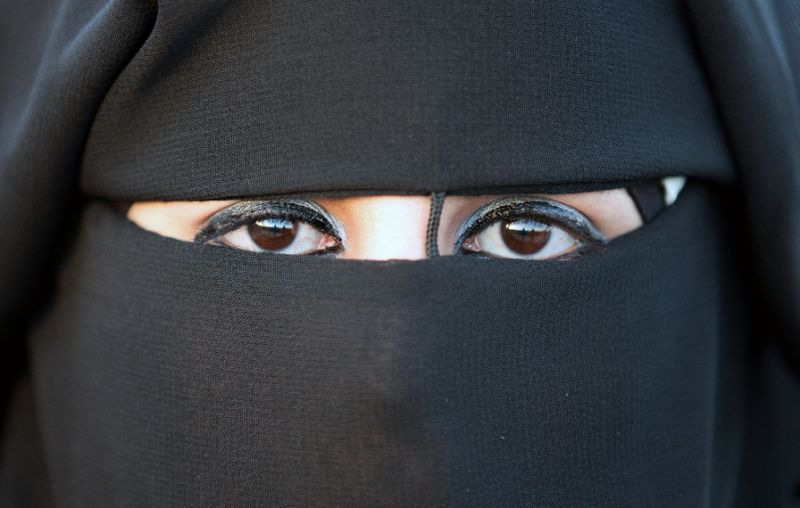Germany’s partial ban on the burqa: Is that a bit like being half-pregnant?

Strictly speaking, that’s not a burqa or at least not the one South Asian Muslims wear
Not quite but it does underline the fact that Germany is facing elections and that the governing CDU/CSU coalition is under pressure. Next month, regional elections are to be held in Mecklenburg-Vorpommern, Lower Saxony and Berlin. And federal elections are due by October 22, 2017 at the very latest.
The polls show unexpected support for the anti-immigrant Alternative for Germany (AfD) party and there’s also been a spike in goodwill for the far-right ultranationalist National Democratic Party of Germany (NPD).
Chancellor Angela Merkel, meanwhile, is under pressure to soothe public opinion months after her “open doors” policy over refugees allowed an estimated one-million people in to Germany.
The difficulties of integrating so many people and perceived fears of terrorist attacks have affected Mrs Merkel’s popularity. There have been a few disturbing incidents in the year since the refugees were allowed in. On New Year’s Eve, women in Cologne and some other German cities were sexually harassed by men of Middle Eastern and North African appearance. In July, Germany suffered two attacks perpetrated by asylum-seekers who arrived in the country long before last year’s “open door” for refugees. There was an ax attack near Wuerzburg and a suicide bombing in Ansbach.
It is a political truth universally acknowledged that those who rule and seek re-election have to be seen to be doing something.
Accordingly the burqa ban. A symbolic exercise, really. The burqa is not really much in evidence in Germany because it’s more common among South Asian and Afghan Muslims and most of Germany’s Muslim population is from Turkey. The burqa is not a familiar item of clothing in Turkey. It’s a long loose garment that envelops the whole body and either has a filmy piece that falls over the face or a thin mesh over the eyes. Then there’s the niqab, which is a face covering and less enveloping overall than the burqa. Unlike the burqa, it leaves the eyes uncovered. The photo above is the niqab more than the burqa.
Adam Taylor recently confessed in The Washington Post that no one, including the German government, seemed to know how many burqa-wearers the ban might affect. He quoted a 2008 survey from the Federal Office for Migration and Refugees, which “showed that around 28 per cent of Muslim women and girls wore a headscarf”. That would be the hijab, not the burqa.
Taylor also quotes Bild newspaper’s frantic search for burqa-wearers in Germany and how it wound up seeking an estimate from Egyptian German political scientist Hamed Abdel-Samad, who’s an atheist. Mr Abdel-Samad suggested that 200 to 300 women may wear a burqa in Germany. If accurate, that’s a really small number. Germany has an estimated 4.7 million Muslims. If only a few hundred wear the burqa or the niqab, that’s just 0.01 per cent of Germany’s Muslim population.
That said, it’s possible Germany’s burqa-wearers may be on the rise. The garment may be more common – but still not that common – among the newest batch of Muslim immigrants. They, unlike the long-settled German Turkish population, come from places where the niqab or the burqa is more usual.
So, to the partial burqa ban.
Mrs Merkel has been both hard and soft at the same time in the way she described it: “From my standpoint, a fully veiled woman scarcely has a chance at full integration in Germany.”
Her interior minister Thomas De Maizière has also said that “the burqa doesn’t fit with our country and does not correspond to our understanding of the role of women.”
But both of them stopped short of calling for an outright ban on the burqa – only prohibiting it being worn in schools, colleges, while driving, appearing before courts or at public registry offices, or when going through passport control.
This is politics not policy.
And it’s understandable, for all sorts of reasons.

